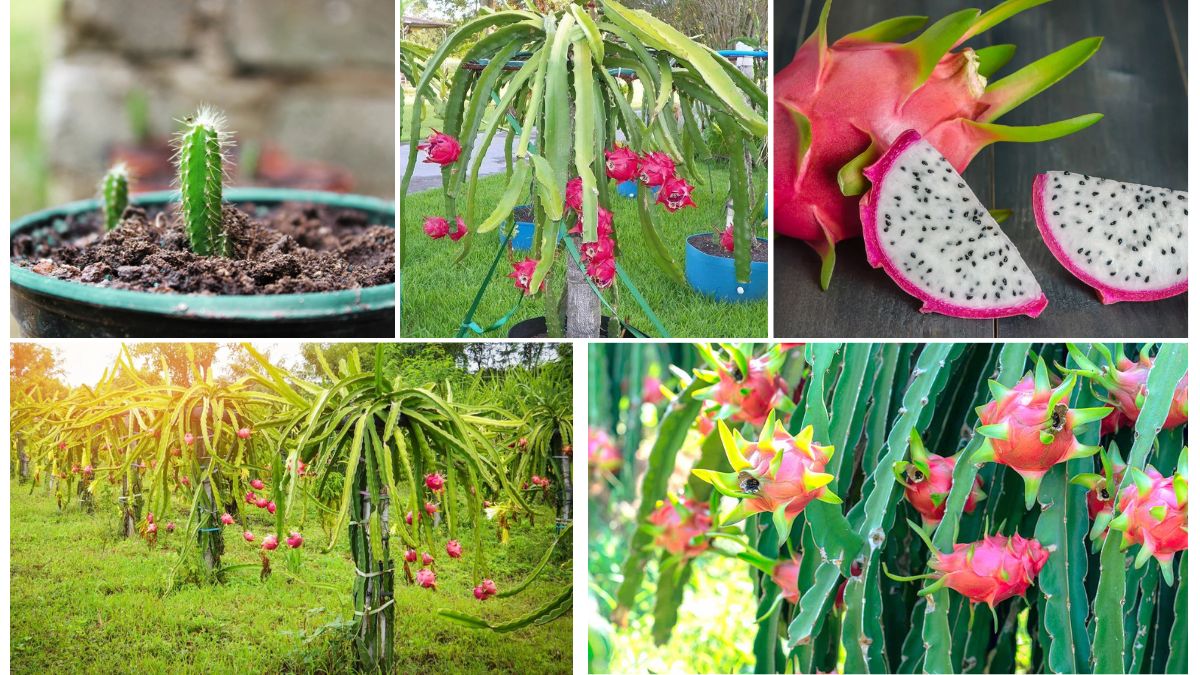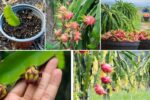In the age of rising urbanization, balcony gardening is gaining immense popularity, transforming dull concrete corners into lush green sanctuaries. Among the many exotic plants that have made their way into urban homes, dragon fruit (Hylocereus spp.) stands out for its vibrant color, unique shape, and numerous health benefits. Known for thriving in warm climates and requiring minimal maintenance, this climbing cactus is an excellent candidate for your next balcony gardening venture.
This detailed guide will walk you through everything you need to know about balcony gardening with dragon fruit—from pot selection and trellis setup to pollination and harvesting. Let’s dive in.
Why Grow Dragon Fruit on a Balcony?
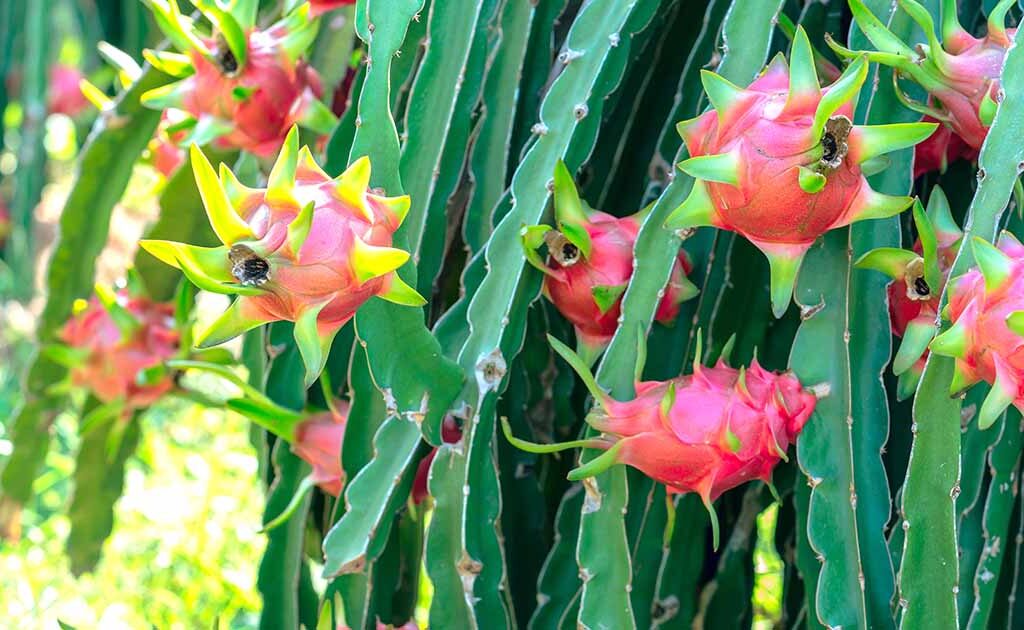
Dragon fruit plants are naturally climbers and require vertical support, which makes them ideal for balconies where space is limited but vertical room is often available. The benefits include:
- Space Efficiency: Grow vertically in pots and use railing-mounted supports.
- Aesthetic Appeal: The plant’s dramatic flowers and colorful fruits beautify any space.
- Low Maintenance: Drought-tolerant and pest-resistant.
- Health Benefits: High in antioxidants, fiber, and Vitamin C.
Choosing the Right Variety
There are several varieties of dragon fruit, commonly divided into three main types:
- Hylocereus undatus – White flesh with pink skin.
- Hylocereus costaricensis – Red flesh with red skin.
- Hylocereus megalanthus – White flesh with yellow skin.
For balcony growing, self-pollinating varieties like ‘Vietnam White’ or ‘American Beauty’ are ideal, especially if bees or hand pollination options are limited.
Light and Temperature Requirements
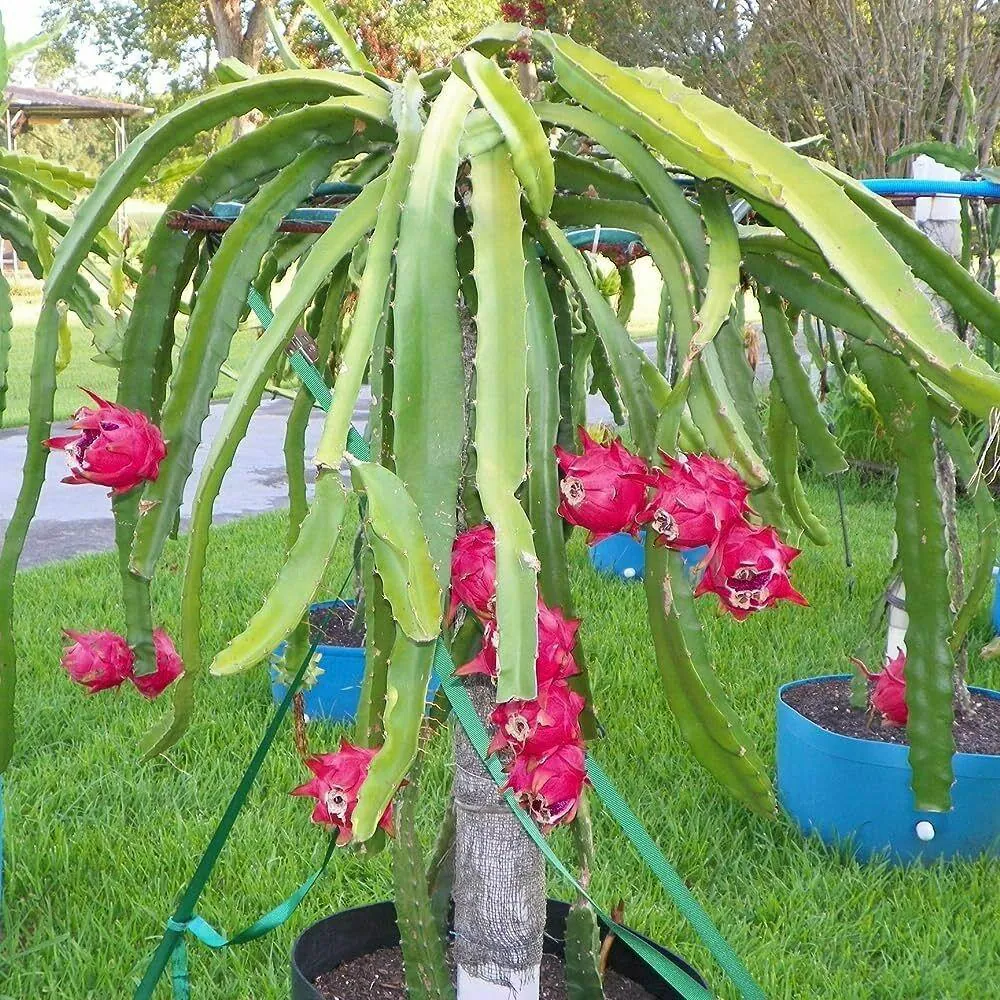
Dragon fruit loves full sunlight and thrives in temperatures between 20°C and 35°C (68°F to 95°F). Ensure your balcony receives at least 6–8 hours of direct sunlight daily. If sunlight is scarce, consider supplementing with LED grow lights.
The plant is not frost-tolerant. During colder months (below 10°C or 50°F), you can wrap the plant in horticultural fleece or move it indoors temporarily.
Pot and Trellis Setup
1. Pot Selection
Choose a large, sturdy pot—at least 20–25 inches deep and 16–20 inches wide. Ensure it has drainage holes to prevent waterlogging. Use ceramic, clay, or heavy-duty plastic to prevent tipping as the plant grows taller.
2. Soil Mix
Dragon fruit thrives in well-draining, slightly acidic soil. An ideal mix includes:
- 2 parts cactus mix or sandy loam
- 1 part perlite or pumice
- 1 part organic compost
3. Trellis Support
As a climbing cactus, dragon fruit needs a vertical structure. Use:
- Bamboo stakes
- PVC pipes with a top ring
- Balcony railings with twine
Secure the plant loosely using garden ties as it grows.
Watering and Feeding
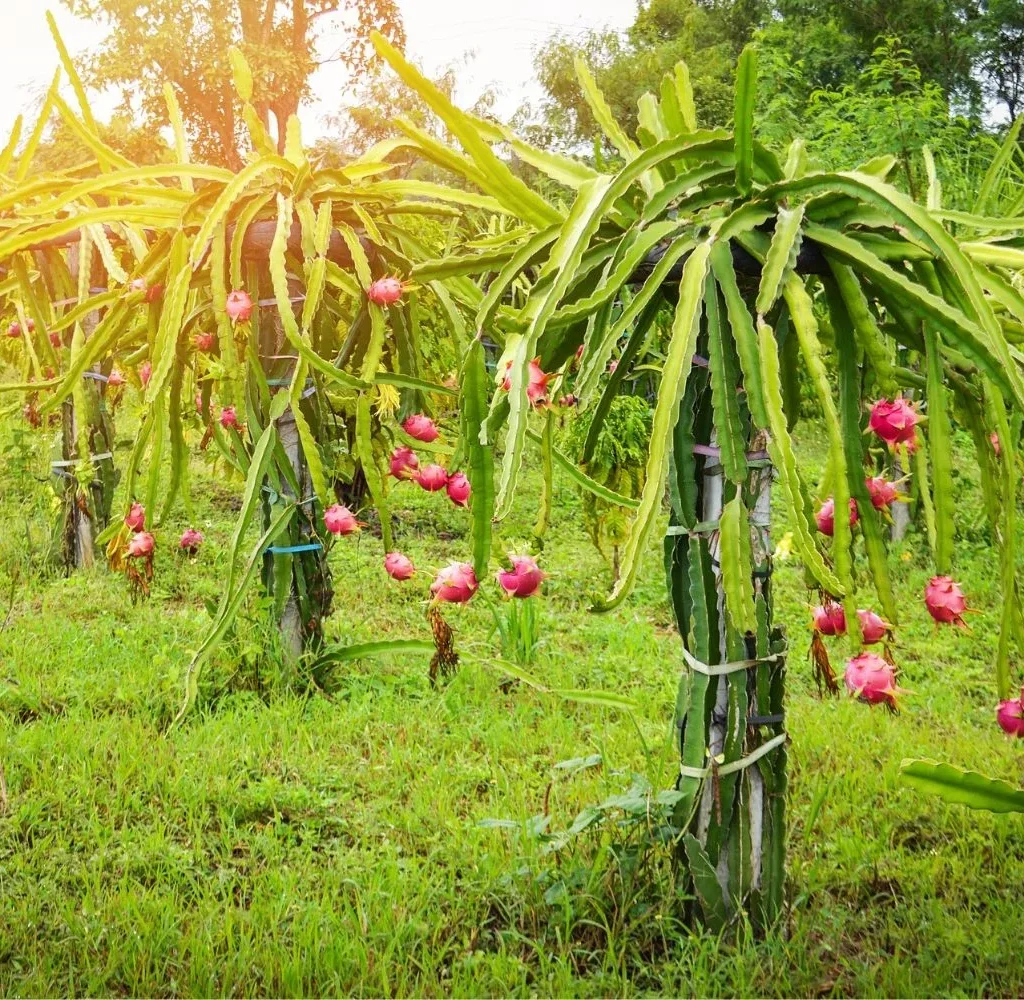
Dragon fruit is a cactus, but it still requires consistent watering—just not overwatering.
- Watering: Once or twice a week during growing season. Allow the top inch of soil to dry out before re-watering.
- Avoid waterlogging: This causes root rot.
- Fertilizer: Apply a balanced 10-10-10 liquid fertilizer every month. Switch to low-nitrogen, high-phosphorus fertilizer during the flowering and fruiting stage.
You can also use:
- Compost tea
- Banana peel mulch
- Seaweed extract for micronutrients
Flowering and Pollination

Dragon fruit flowers are large, white, and fragrant, usually blooming at night and lasting for one night only.
- Bloom time: Usually 6–8 months after planting in ideal conditions.
- Pollination: Indoor balconies may not attract pollinators, so hand pollination is often necessary.
How to hand pollinate:
- Use a soft brush or cotton swab.
- Collect pollen from the flower’s stamen.
- Gently dab it onto the stigma (center).
- Repeat with multiple flowers for better chances.
Fruiting and Harvesting
After successful pollination, fruits take 30–50 days to mature. You’ll know they’re ready to harvest when:
- Skin color turns bright and even.
- Fruit gives slightly when pressed.
- The “wings” or scales on the skin begin to wither.
Harvest tip: Use garden shears to snip the fruit, leaving a small stem to avoid damaging the plant.
Pruning and Maintenance
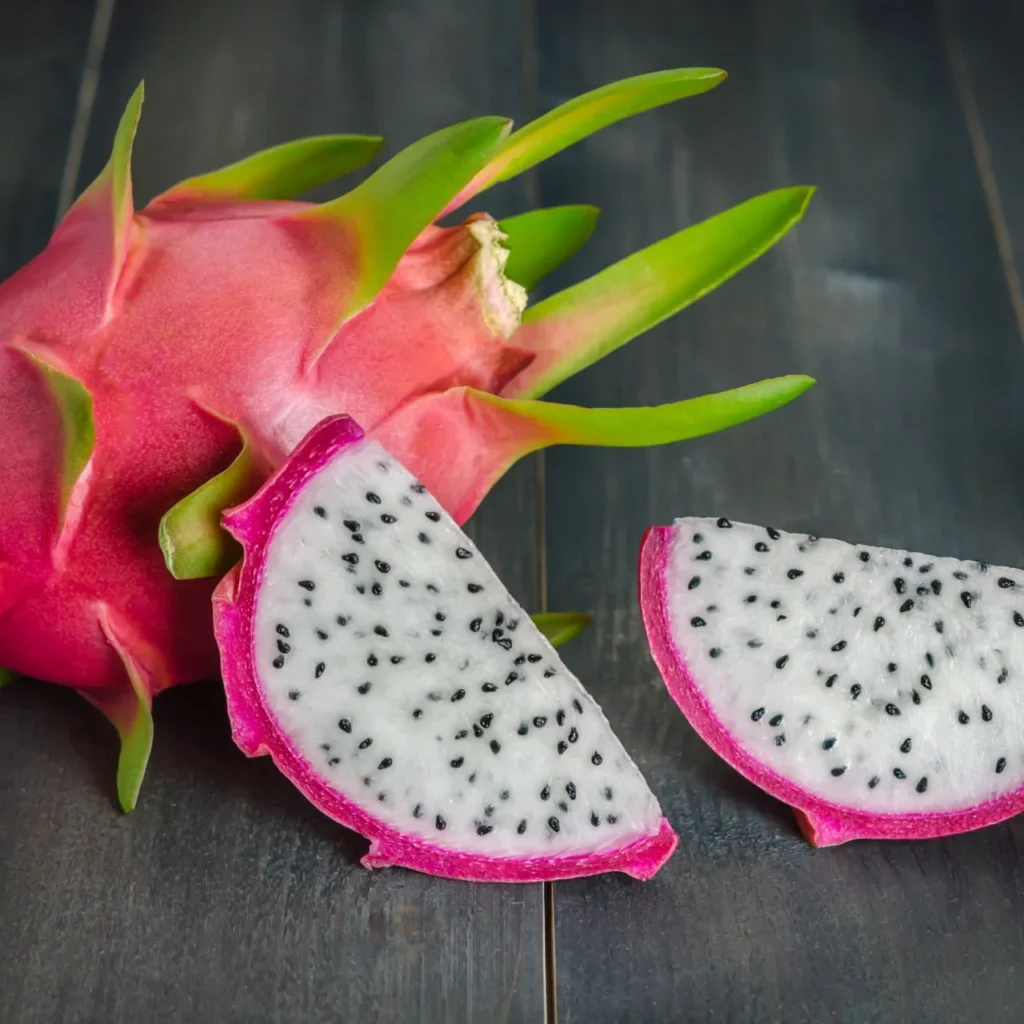
Regular pruning keeps your balcony tidy and promotes better airflow.
- Trim back excess growth: Focus on crowded or crossing stems.
- Remove damaged or diseased sections: Especially during monsoon season.
- Sanitize pruning tools to prevent infections.
Tidy up fallen plant debris from pots to deter pests like mealybugs or snails.
Common Pests and Problems
While generally hardy, dragon fruit plants can face:
- Mealybugs: Wipe with alcohol-dipped cotton.
- Root rot: Caused by overwatering. Let soil dry and reduce watering.
- Yellowing: Can signal overwatering, lack of nutrients, or poor light.
Preventative Measures:
- Keep plants in well-ventilated areas.
- Water in the morning to allow drying by evening.
- Rotate the pot weekly for uniform sun exposure.
Propagation Tips
You can propagate dragon fruit easily from cuttings:
- Take a healthy stem cutting (6–8 inches long).
- Let it dry for 3–5 days until the end calluses.
- Plant in potting mix and water lightly.
- Roots form in 2–3 weeks; new growth begins in 4–6 weeks.
Cuttings typically fruit faster (within 1–2 years) compared to seeds (5–7 years).
Tips for Success
- Use mulch to retain soil moisture and suppress weeds.
- Add worm castings or compost tea monthly.
- Train your plant early to climb the trellis.
- Use shade netting if your balcony gets extremely hot in summer.
- Keep a gardening journal to track growth, flowering times, and yields.
Final Thoughts
Balcony gardening doesn’t have to be limited to herbs and small ornamentals. Dragon fruit offers a tropical flair, rich nutritional benefits, and the rewarding experience of growing your own exotic fruit in a small space. With the right setup, some patience, and regular care, your balcony can become a mini dragon fruit farm in the heart of the city.
So, grab your pot, set up a trellis, and get ready to turn your balcony into a thriving, fruitful oasis.
